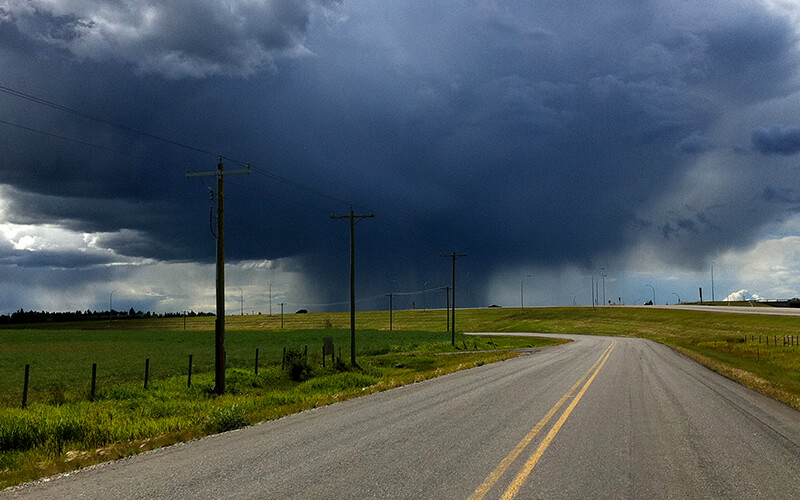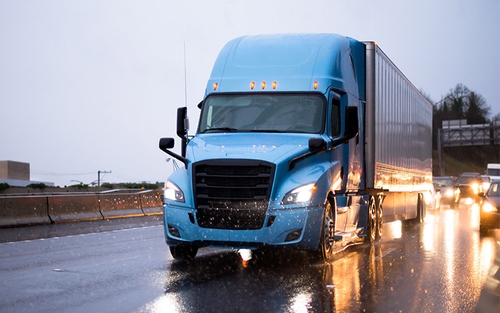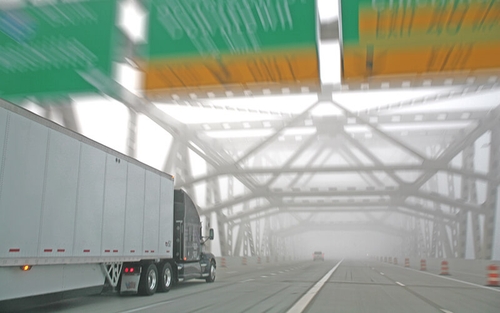Tornado driving safety tips for truck drivers


By The Schneider Guy
We’ve seen an unusual increase in the number of tornadoes so far this spring. For truck drivers, this means constantly having to be aware of the weather, as tornadoes can touch down with little or no warning.
We turned to two Schneider experts to learn about their tornado driving safety tips for truck drivers: Schneider Training and Development Administrator Dan Shackelford has been doing research on tornado safety, while Driver Trainer Matt Brauer was recently in Pennsylvania and about to leave with a load when tornado sirens started going off.
Here’s what Dan and Matt had to say based on their research, experiences and what we advise our drivers to do here at Schneider when a tornado hits while driving:
Before getting on the road
1. Know what the different weather terms mean
Make sure you know the difference between a watch and a warning. Per the National Weather Service…
- A Tornado Watch is issued when conditions are favorable for a tornado to develop and is usually issued for a duration of four to eight hours.
- A Tornado Warning is issued when a tornado is indicated by radar or sighted by spotters and is usually issued for a duration of around 30 minutes.
2. Trip plan
Your trip planning should consist of a few different things:
- Look at the weather conditions for where you are currently and where you’re going. If you think conditions are going to be unsafe along your route, contact your leader.
- Have an idea of what counties you’ll be driving through. When there’s a storm or tornado, typically meteorologists will list the counties being affected, not the cities.
- Have a plan in case the weather does get bad. Before leaving, pinpoint different operating centers or truck stops along your route that you could take cover at in an emergency.
What to do when a tornado hits while driving: The do’s
The following tips are what we recommend our drivers do if they find themselves caught in a tornado. However, every situation is different and we encourage our drivers to do whatever they think gives them the greatest chance of survival.
1. Get inside
This is your priority. If you know an operating center or truck stop is very close by, try to get to it. The more walls you can get between you and the tornado, the safer you’ll be.
2. Get into a ditch
If you can’t get to a shelter, find a ditch, ravine or culvert, head for that spot and get as low as you can in it. Try to get as far away from your truck and any other vehicles because a tornado can pick up a semi-truck.
Lay low and cover your body and head with whatever you can bring with you from your truck, like a blanket or a coat. At the very least, cover your face with your arms.
In this situation, there are a few things you need to be aware of:
- Is the ditch filling with water?
- Are there power lines overhead that could fall into the wet ditch?
- Is there flying debris and hail?
3. Worst case scenario: Stay in your truck
When you have no other option, stay in your semi-truck.
First, pull over and park your truck. Keep your seat belt on and cover your head with a blanket or coat.
Get as low in your seat as possible and try to stay away from the window.
What to do when a tornado hits while driving: The do not’s
1. Do not try to outrun / outdrive the tornado
There’s a few reasons why trying to outrun a tornado is a dangerous idea:
- Tornadoes generally travel from the southwest at an average speed of 30 MPH, but many have very erratic paths with speeds approaching 70 MPH. You may think you’re getting away from the tornado, but in an instant, it can change direction.
- There’s a good chance it will already be raining hard and possibly even hailing. These elements are very difficult to drive in.
- If you’re in a busy area, there will be other drivers who are panicking and making last-minute decisions. Dangerous accidents can easily occur in this situation.
2. Do not hide under an overpass or bridge
The mere shape of the overpass can act like a wind tunnel and cause the winds to speed up to 200 MPH, making you very susceptible to flying debris.
You can never be too prepared.
As a truck driver, it’s important to know how to stay safe while out on the road. Read more about our weather-related blog posts so you’re ready for all types of road conditions.

Schneider Guy loves the "Big Orange." He's passionate about the trucking industry and connecting people to rewarding careers within it. He's been the eyes and ears of our company since our founding in 1935, and he's excited to interact with prospective and current Schneider associates through "A Slice of Orange."



